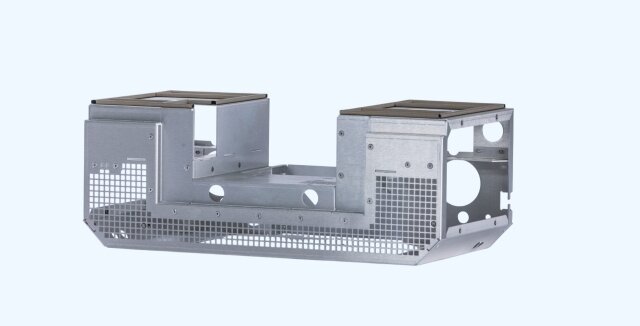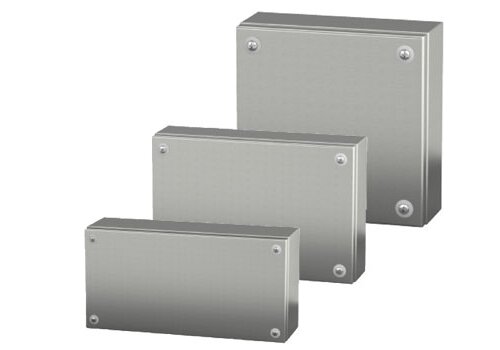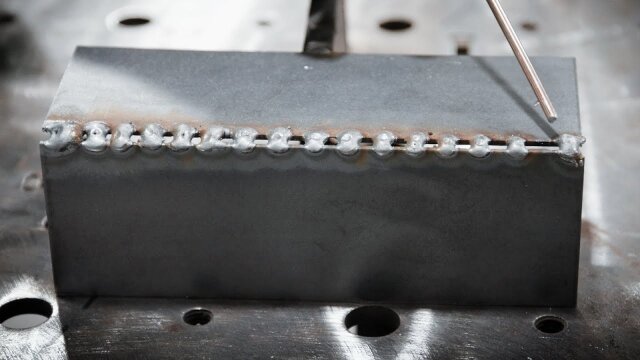Rising fabrication costs can strain any project. These expenses often stem from material waste, inefficient designs, or slow production. High costs not only affect pricing and delivery schedules but can also impact product quality. The good news is that many of the main cost drivers in sheet metal fabrication can be managed with the right approach.
Reducing sheet metal fabrication costs starts with smarter design, efficient material use, and streamlined production. Optimizing every stage—from concept to final manufacturing—saves time, reduces waste, and increases profit margins.
Controlling cost doesn’t mean sacrificing quality. Below are nine proven ways to reduce fabrication expenses while keeping your products reliable and high-performing.
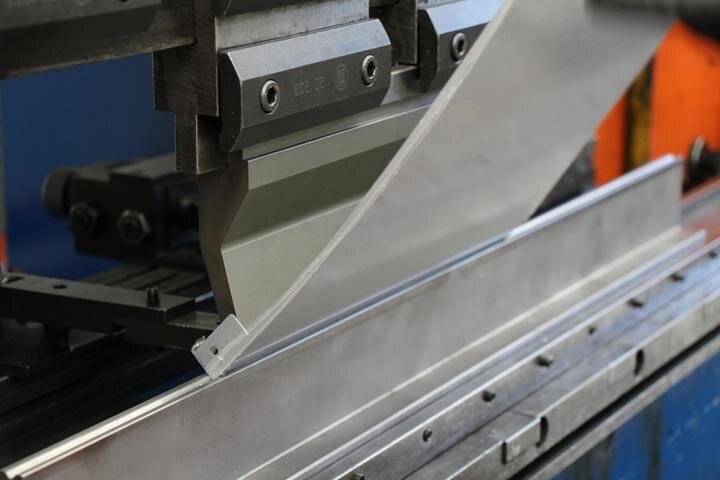
1. Design Optimization for Cost Efficiency
Good design decisions directly affect manufacturing costs. The more efficient a design is, the fewer steps, tools, and materials are needed to produce it. Well-optimized designs are faster to make, easier to assemble, and better suited for large-scale production.
Simplify Part Geometry to Reduce Complexity
Complex shapes usually lead to higher costs because they require more machining, setups, and specialized tooling. Every additional bend, cut, or weld adds labor time and increases the chance of error.
Simplifying part geometry improves consistency, shortens production time, and speeds up time-to-market.
Start by evaluating whether each feature serves a functional purpose. Remove decorative or unnecessary details that slow down processing. Favor straight lines and simple angles instead of curves or sharp corners. Avoid deep draws, tight bends, or intricate contours that make laser cutting or bending more difficult.
Reducing the number of bends or combining several components into a single formed piece can also lower assembly and welding costs. For example, instead of welding several panels to form a box, bend a single sheet into the required shape. This approach saves time, improves accuracy, and enhances structural strength.
Standardize Hole Sizes, Radii, and Features
Standardization is a simple yet powerful way to cut costs. Using consistent hole sizes, bend radii, and hardware reduces setup time, tool changes, and production errors. It also allows faster, smoother fabrication.
For instance, limiting the variety of hole diameters minimizes the number of punch tools required and keeps setups consistent during large runs. Standard bend radii let operators complete multiple parts using the same press brake settings, saving adjustment time.
Where possible, use standard bolts, nuts, and fasteners instead of custom parts. Custom components often require special tooling, increase lead time, and raise procurement costs.
2. Material Selection and Utilization
Material costs often represent a major portion of total fabrication expenses. Choosing the right metal type and thickness greatly affects both performance and budget.
Choose Materials Based on Function and Budget
Material selection should begin with a clear understanding of part requirements. Different metals behave differently during processing—some bend easily, some resist corrosion, and others provide high strength. The goal is to match performance needs without overdesigning.
For example:
- Mild steel is affordable, easy to form, and welds well—ideal for general applications.
- Stainless steel offers excellent durability and corrosion resistance but costs more and is harder to process.
- Aluminum is lightweight and easy to machine but requires special care during welding and forming, as it scratches easily.
Material thickness also matters. Thicker sheets not only cost more but also take longer to cut. If the design allows, using thinner materials while maintaining strength can significantly reduce costs.
Reduce Waste Through Efficient Nesting
Even the best materials can be wasted through poor sheet utilization. Nesting—the arrangement of parts on a sheet—plays a crucial role in minimizing scrap. Effective nesting maximizes sheet usage and reduces waste.
CAD software can optimize layouts for minimal spacing and best yield. Grouping parts of the same material and thickness allows shared cutting settings, minimizing setup time and improving throughput.
Designing parts with compatible shapes or proportions also helps. Small design tweaks—like rotating a part or adjusting a flange—can dramatically increase material efficiency and save costs.
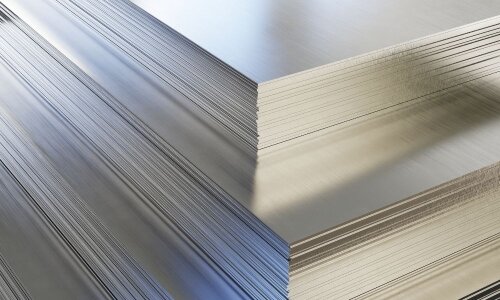
3. Tolerance and Specification Management
Tolerances and surface specifications have a direct impact on manufacturing cost. Overly tight tolerances or unnecessary finishes increase machining time, inspection requirements, and production complexity.
Avoid Overly Tight Tolerances
Tight tolerances demand higher precision, which slows production and adds extra steps for calibration and quality checks. If a part doesn’t require extreme precision, these measures only drive up costs.
Apply reasonable tolerances that meet the functional requirements of the part. For example, fastener holes might need tighter control, while non-critical surfaces can be more lenient. Understanding how parts fit and interact helps identify where precision truly matters.
Early communication with your fabricator is essential. They can recommend achievable tolerances based on material type and process capability. For instance, laser cutting may naturally meet fine tolerances, while other processes might require post-machining. Matching tolerance expectations to the chosen process helps avoid overengineering and excess costs.
Specify Only Necessary Finishes and Coatings
Surface finishes and coatings protect parts from corrosion, wear, and environmental damage—but unnecessary finishes add cost and lead time. Each additional coating requires materials, setup, and sometimes outsourcing.
Consider the part’s use and exposure conditions:
- Indoor or hidden parts may only need a basic mill finish.
- Outdoor or visible components might require powder coating, anodizing, or plating.
Choosing coatings based on real needs helps prevent waste.
Sometimes the base material itself provides adequate protection. For example, stainless steel offers natural corrosion resistance, and aluminum forms a self-protective oxide layer. Understanding these properties can eliminate redundant finishing steps and save both time and money.
4. Assembly and Joining Optimization
Assembly is one of the most labor-intensive stages in sheet metal fabrication. Designing parts for easier and faster assembly helps reduce production time, improve accuracy, and lower labor costs.
Design with Fewer Fasteners and Welds
Evaluate each weld or fastener to see if it’s truly necessary. Some joints can be redesigned using bends or formed flanges, which hold parts together without additional hardware. Spot welding or adhesive bonding can replace long welds while maintaining sufficient strength.
Standardizing fastener types also contributes to efficiency. Using one or two screw types minimizes tool changes and simplifies inventory management. Self-clinching or self-tapping fasteners are excellent choices—they install quickly, don’t require threading, and provide strong, reliable joints.
Reducing weld points saves time, minimizes heat distortion, and reduces post-weld finishing. Fewer welding operations also lower the risk of misalignment. A simplified structure that naturally fits together ensures higher consistency and production speed.
Use Tabs, Slots, and Self-Locating Features
Tabs, slots, and self-locating features can significantly speed up assembly and improve precision. These design features help parts automatically align during assembly, reducing the need for fixtures, clamps, or measuring tools.
Tab-and-slot designs hold components in place before welding or fastening—especially useful for large or box-type assemblies requiring accurate alignment. They reduce human error, simplify positioning, and shorten setup time.
Self-locating features are also ideal for automated assembly. Robots or machines can easily align and position parts with these built-in guides. Even in manual assembly, workers can align parts by feel, improving speed and accuracy.
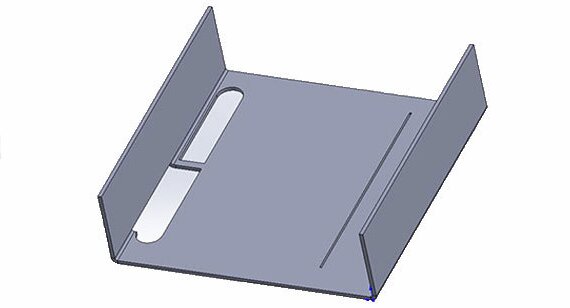
5. Prototyping and Early Validation
Prototyping plays a crucial role in controlling fabrication costs. Creating and testing a prototype early helps identify design flaws before mass production, preventing expensive rework and delays later on.
Use Rapid Prototyping to Avoid Costly Redesigns
Rapid prototyping allows engineers and designers to turn digital models into real parts within days. This process reveals how a design performs under real conditions—allowing quick adjustments before full-scale production begins.
Methods such as laser cutting, CNC machining, and 3D printing can deliver accurate prototypes quickly. These samples can uncover assembly misfits, interference issues, or weak structures. Detecting such problems early avoids costly tooling changes and material waste later.
Prototypes also enhance collaboration between designers, manufacturers, and end users. Physical samples make it easier to discuss design intent and confirm details. Teams can make informed, data-based decisions instead of relying solely on digital models or simulations.
Validate Assembly and Function Before Mass Production
Validation ensures that the part design meets all performance and assembly requirements before scaling up production. It verifies that parts fit correctly, function properly, and can be produced efficiently.
Assembly validation checks alignment and fit between components. Misalignment or tight fits may require rework or lead to rejection. Testing fit-up early prevents these issues.
Functional validation evaluates how a part performs under real conditions—such as load, vibration, or temperature variations. It ensures the part operates as intended without premature wear or failure.
6. Supply Chain and Supplier Collaboration
Collaborating closely with suppliers and manufacturers can have a major impact on overall fabrication costs. Early engagement with experienced partners improves manufacturability, shortens lead times, and enhances cost control.
Collaborate with Fabricators During the Design Stage
Involving your fabrication partner early in the design phase helps identify potential manufacturing challenges before they become costly. Fabricators understand material behavior, tooling limitations, and process efficiencies that designers may overlook.
Early collaboration allows engineers to make practical design improvements—such as adjusting bend radii to fit available tools, removing unnecessary welds, or modifying cutouts for standard laser processing. These insights can simplify production and reduce both time and costs.
It also strengthens communication, helping both sides align on design goals, tolerances, and material preferences. This minimizes revisions and accelerates the process from prototype to production, ensuring smoother workflows and fewer delays.
Leverage Supplier Expertise to Find Cost-Reduction Opportunities
Suppliers and fabricators have extensive knowledge of materials, manufacturing methods, and logistics. Their experience often uncovers cost-saving strategies that go unnoticed during design.
For example, they might recommend a more cost-effective material with similar performance, suggest using standard sheet sizes to reduce waste, or propose combining smaller orders into a larger batch for volume discounts.
Fabricators can also streamline processes—like replacing welds with bends or merging parts to reduce assembly time. They know which steps are labor-intensive and which can be automated for higher efficiency.
7. Volume and Batch Planning
Production volume is one of the biggest cost factors in sheet metal fabrication. Small runs typically cost more per part because setup and tooling expenses are not spread out. Large runs, on the other hand, benefit from economies of scale.
Balance Small Runs and High-Volume Production
Small-batch production offers flexibility and makes it easy to modify designs quickly. However, frequent machine setups and calibrations increase per-part cost and raise the risk of human error.
High-volume production spreads setup costs across more parts, allowing machines to run continuously at higher efficiency. The trade-off is reduced flexibility—design changes during large runs can be costly.
To strike a balance, plan production based on actual demand and part complexity. Use small batches for prototypes or low-demand custom parts, and large runs for standardized or high-volume components.
Group Similar Parts to Reduce Changeovers
Changeovers—switching equipment between different materials, thicknesses, or setups—add time and cost. Grouping similar parts minimizes interruptions and keeps machines running efficiently.
Schedule parts with the same material, thickness, or bending requirements together. This reduces adjustment time and ensures longer periods of steady operation.
Even simple optimizations—like nesting similar-shaped parts on the same sheet—can improve material yield and cut setup costs. Efficient batch planning reduces labor time, shortens lead times, and minimizes the potential for production errors.
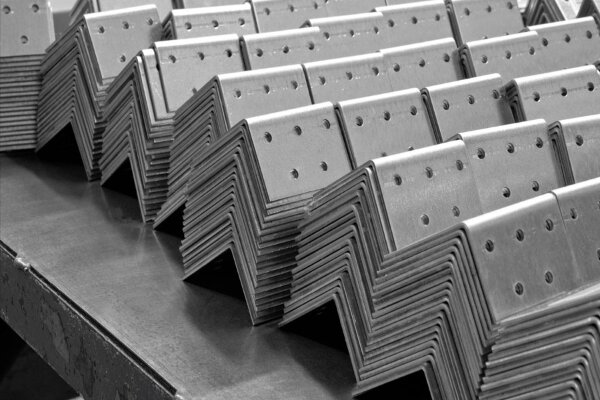
8. Maintenance, Packaging, and Logistics
Costs don’t stop at the production stage. Finishing, handling, and shipping can also affect your project’s total expenses. Designing parts with these factors in mind helps lower labor costs, prevent damage, and reduce transportation expenses.
Design for Easier Handling and Post-Processing
Parts that are easy to handle and assemble save time and effort. Avoid sharp edges, overly heavy pieces, or complex shapes that require special handling or equipment.
Simplified designs make it easier for workers to move, stack, and process parts. For example, flat panels are easier to paint, coat, or polish than complex folded parts. Components that fit standard racks or pallets can be processed in batches, saving time and minimizing the risk of surface damage.
Reduce Shipping Costs with Efficient Packaging and Flat Designs
Shipping cost depends heavily on weight, volume, and packing method. Designing parts to be flat-packed or stackable maximizes space in crates or containers. Nesting or folding parts to reduce overall volume can significantly cut freight costs.
Use standard packaging materials and protective layers to prevent damage during transit, without excessive packaging.
For large assemblies, consider designing parts that can be shipped disassembled and easily reassembled on-site—this lowers shipping weight and volume while maintaining ease of installation.
9. Manufacturing Process Improvements
Improving fabrication processes directly reduces cost and lead time. Selecting the right cutting method and combining manufacturing steps can minimize waste, reduce labor, and enhance overall efficiency.
Choose the Most Efficient Cutting Method
Each cutting technology has unique advantages depending on part complexity, material thickness, and production scale:
- Laser Cutting – Ideal for high-precision parts with intricate designs. It provides clean edges and requires minimal post-processing. However, it can be slower and costlier for thick materials.
- Plasma Cutting – A good choice for thicker sheets or larger components that don’t need extreme precision. It’s faster and cost-effective but may require extra edge finishing.
- Waterjet Cutting – Uses high-pressure water and abrasive media to cut without heat distortion. It’s suitable for heat-sensitive materials but slower and more expensive for simple parts.
- Punching or Stamping – Best for high-volume production. Though tooling requires an upfront investment, these methods are highly efficient for repeat runs, offering fast, consistent, and low-cost results once tooling is ready.
Choosing the right process based on material, quantity, and precision requirements can have a major impact on both cost and turnaround time.
Combine Operations to Streamline Production
Combining multiple fabrication steps into one operation saves time, reduces handling, and maintains accuracy. For example, modern machines can cut and bend parts in a single setup, while others can punch, form, and tap components in one run.
Using multi-function equipment minimizes setup changes, shortens lead time, and reduces labor requirements.
Design choices can also support process integration. Adding tabs, slots, or self-locking features eliminates extra alignment or welding steps. Incorporating self-fastening mechanisms can replace manual assembly, further improving efficiency and lowering costs.
Conclusion
Cutting sheet metal fabrication costs doesn’t mean lowering quality. By improving design efficiency, choosing suitable materials, and optimizing production methods, you can significantly reduce expenses while maintaining strong, reliable performance.
Close collaboration with suppliers and fabricators adds even more value—helping identify cost-saving opportunities, reduce waste, and improve overall workflow. Together, these strategies lead to faster production, better precision, and greater profitability.
Ready to Reduce Your Fabrication Costs? Send us your part drawings or 3D files today. Our engineering team will review your design, provide practical DFM suggestions, and help you optimize for cost, performance, and lead time.
Hey, I'm Kevin Lee

For the past 10 years, I’ve been immersed in various forms of sheet metal fabrication, sharing cool insights here from my experiences across diverse workshops.
Get in touch

Kevin Lee
I have over ten years of professional experience in sheet metal fabrication, specializing in laser cutting, bending, welding, and surface treatment techniques. As the Technical Director at Shengen, I am committed to solving complex manufacturing challenges and driving innovation and quality in each project.


